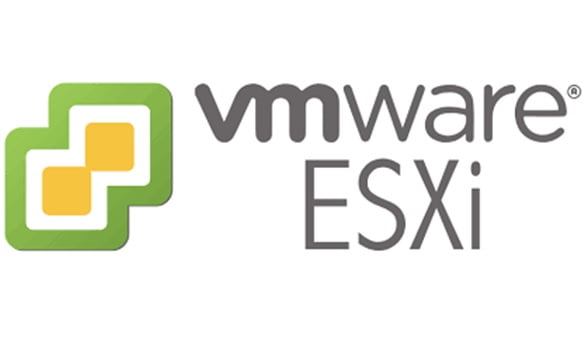What Is Vmware Vsphere Platinum And Why Do Organizations Need It?
VMware is a large software company that has developed a range of Products For Virtualization Solutions. VMware Vsphere is not a specific product or software and was Previously Known as VMware Infrastructure.
It is A Brand Name For The VMware Server Virtualization Product Suite, Which Includes Virtualization, Management, And Layer Interface Components.
The two main components of a VMware vSphere server are the ESXi server and the vCenter server.
VMware ESXi
The ESXi server and virtualization server are the most important part of vSphere. ESXi is a hypervisor (a model of hardware virtualization) of the first type, and all virtual machines or guest operating systems are installed on the ESXi server.
VMware ESXi is usually installed directly on the hardware as software in an ISO file similar to Windows or Linux. ESXi allows you to install multiple virtual machines on a single physical piece of hardware and run multiple operating systems such as Windows, Mac, and Linux.
VMware ESXi is available in both free and paid versions, with the free version having more restrictions. You cannot manage the free version of the ESXi hypervisor with the vCenter Server.
VMware vCenter
VMware vCenter is software that helps you centrally control and manage the entire VMware virtualization infrastructure. vCenter can add thousands of ESXi hosts to the list of managed ESXi hosts and virtual machines running on those hosts.
vCenter Server provides many of vSphere’s features, including VMware DRS, VMware HA (High Availability), VMware vMotion, VMware Fault Tolerance, Virtual machine templates, and VM cloning.
You can install vCenter on Windows or use the Linux version of the vCenter Server Appliance. To install vCenter Server, it would be best to have an external database such as Microsoft SQL Server and Oracle or an attachment database such as PostgreSQL.
These databases store information about virtual infrastructure components such as ESXi host information, virtual machine information, and executable data.
vSphere Client
- Simply put, vSphere Client is client-side software that allows the end-user to control a vCenter Server. It is similar to an RDP client that helps you connect remotely to a Windows system.
- To install, manage, and access virtual servers hosted on the ESXi server, you will need another part of the vSphere suite called the vSphere Client. The vSphere Client allows network administrators to connect to ESXi servers and access and manage virtual machines. It is installed on a client machine (for example, a laptop in charge of the network) and provides ESXi server management work from within the client system.
- vCenter is a server similar to the vSphere Client; The only difference is that you are now dealing with a more powerful server. The vCenter server is installed on a Windows or Linux server, allowing you to manage virtual machines and ESXi hosts simultaneously.
Advantages and disadvantages of VMware vSphere
Like any other software platform, VMware vSphere has advantages and disadvantages. The biggest advantages of vSphere are its stability and reliability.
As VMware is recognized as the leading company in this technology field, you will have many helpful and educational resources, such as technical articles, videos, discussion forums, etc. Perhaps the biggest drawback to using vSphere is its price and complexity.
Many users find this product expensive, and its web console interface contains so many configuration options that it often confuses inexperienced administrators.
vSphere Platinum
- VMware has increased the security level of its virtualization systems by releasing a new version of its virtualization software called vSphere Platinum. vSphere Platinum is equipped with several security features, the most prominent of which is AppDefense, which allows you to monitor and control all virtual machine traffic. With this monitoring feature, you can detect and track if someone intends to make unauthorized changes or infect virtual machines with malware.
- “VMware vSphere flagship is equipped with built-in AppDefense,” the VMware CEO told VMworld 2018. Platinum greatly increases your organization’s security level.”
- AppDefense is a VMware data center security product that protects applications running in virtual environments. AppDefense uses machine learning and behavioral analytics to understand how an app is supposed to behave and detect security threats by monitoring changes to the app’s status.
- This new Platinum version combines vSphere’s inherent security features with AppDefense. This product is designed to help vSphere administrators provide more secure infrastructure and applications by enabling virtual machines to run in a stable and safe state. By allowing you to view the behavior of the application and the virtual machine, an organization can identify security threats more quickly and accurately and respond appropriately.
- “With AppDefense, you can monitor a virtual machine from its goals to its behavior, tell the system what it is allowed to do, and dramatically thwart attacks without affecting system performance,” says Gelsinger. This feature is compelling. “We want you to be able to use it everywhere, so we put it directly in vSphere.” “I consider it a fried potato next to a hamburger,” he says. No one leaves the restaurant without French fries. In the future, who wants to run a virtual machine without activating its security features? “That’s why we want to get this done.”
- vSphere Platinum is compatible with the vSAN encryption system and network and virtual machine encoding, allowing the entire VMware suite to be encrypted.
- In the foreseeable future, VMware envisions organizations and large corporations moving from point-to-point security tools to adding security to their entire infrastructure to gain more significant and precise control over their security threats.
VMware provides adaptive subdivisions.
- In addition to unveiling vSphere Platinum, the company specializing in computer systems virtualization introduced its Micro-Segmentation technology.
- Micro-segmentation is a way to build secure areas in data centers and cloud development. It allows companies to separate workloads on the network and protect each of them independently, reducing the level of attack on the network. Large companies reduce the risk of an attacker moving from one workload or application to another by setting rules that limit the network and application flow between tasks.
- VMware has been discussing network-level micro-segmentation technology for nearly five years and has used it as a key element in NSX networking and security. But at VMworld, the company has taken micro-segmentation one step further, calling it Adaptive Micro-segmentation.
- Adaptive subdivision raises segmentation from the network to the application level, bringing it closer to VMware (NSX) and vRealize Network Insight (Operations Management) network products through AppDefense. By working together, these products can identify an application’s intended composition and behavior, set a policy, and stop workloads and network elements associated with the application.
- “Micro-segmentation, as a powerful idea, pushed us to go one step further and turn it into adaptive micro-segmentation,” says Gelsinger. We merged AppDefense and vSphere with NSX to enable application-related policies through vSphere and the network and then shut down the network and computing. “All of this together creates a comparative micro-segmentation.”
- So, who needs VMware vSphere Platinum? Any large company that needs a higher level of security, such as health centers and financial institutions, will welcome such capabilities. Having these features helps you quickly secure your security audits and minimize the risk of data corruption. Such organizations have previously had to use similar protection methods, but with vSphere Platinum, you can manage these features centrally without the need for third-party tools. The same version as Standard or Enterprise Plus will suffice for the rest of us.
